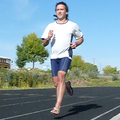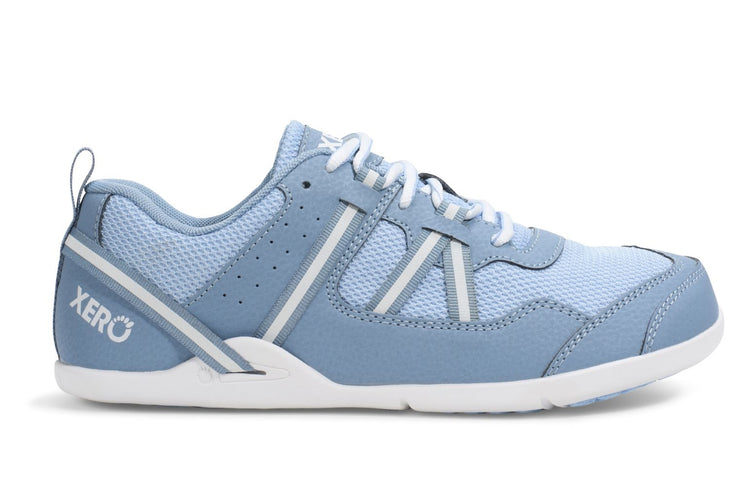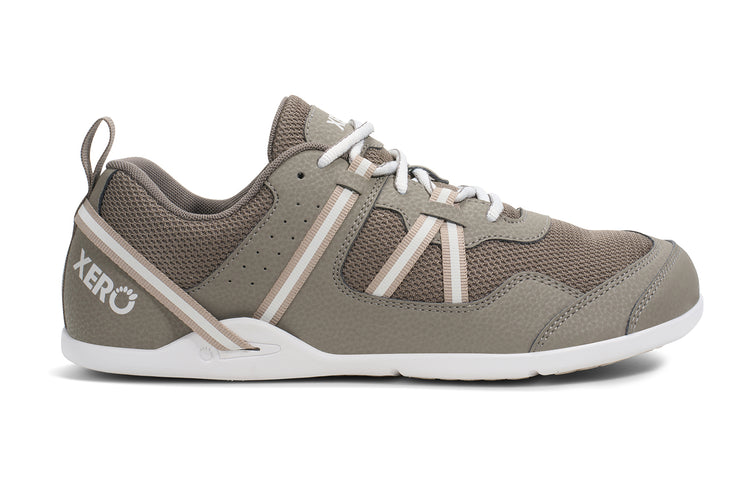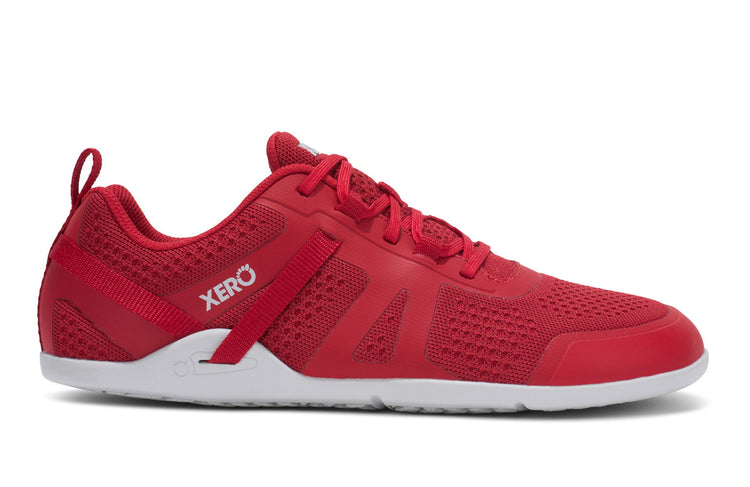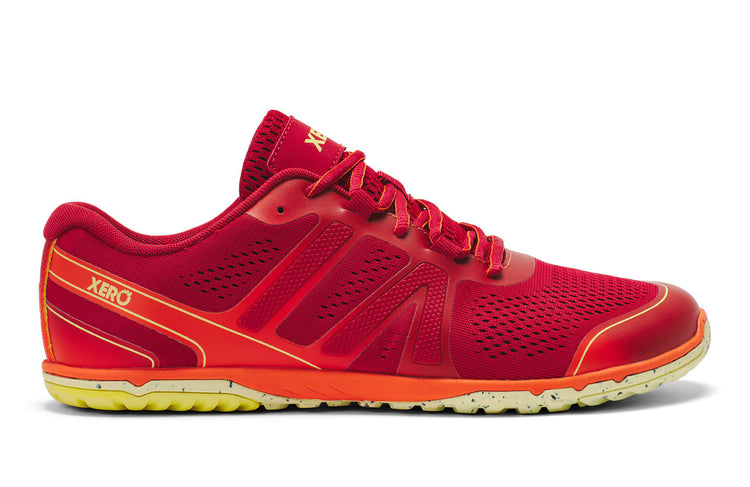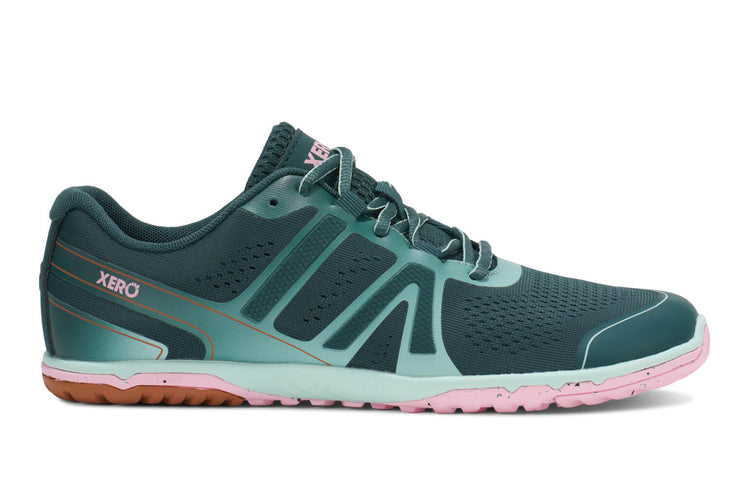latest News
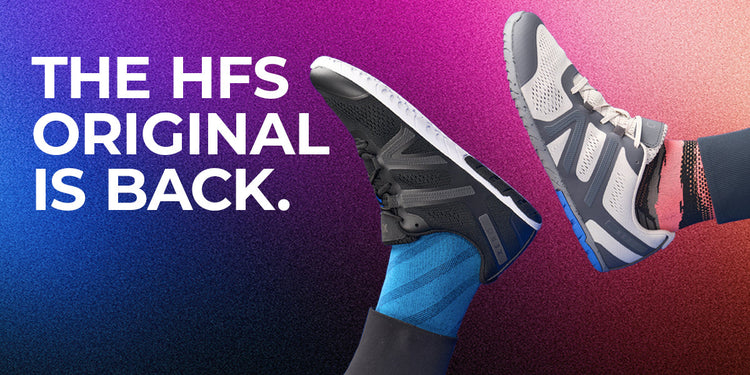
HFS Original or HFS II... Which One Is Right for Me?
Five years ago we launched the HFS road-running shoe, which became a huge favorite with barefoot enthusiasts for running and many other activities, as well.Then a little over a year ago, we launched the updated HFS II.Since many people owned both versions, we did a survey and asked which they liked better, the HFS Original or the HFS II… And the clear winner was… both.Survey results were 50/50 almost down to the number. You spoke. We listened.That’s right, the HFS Original is back! But that brings up a question…What’s the Difference Between the HFS Original and the HFS II? HFS Original vs HFS II - Which Is For You?Which HFS is right for you will depend on what you want from your running shoe…HFS Original – For a More Barefoot FeelIf you want as little as possible between you and the road when you run, then the HFS Original is the shoe for you. The HFS Original gives you: A closer connection to the ground A more responsive feel More ground feedback for more natural movement and agility. When we designed the HFS II, we added a thin BareFoam™ layer to the sole for some extra protection.If you’re a barefoot purist, or an experienced barefoot runner, this layer may be more than you want in your shoe. And indeed, some of our “most barefoot”Xero Shoes fans are the ones who asked us to bring back the HFS Original.HFS II – An Extra Layer of ProtectionThe HFS II has that thin BareFoam™ layer to provide an added bit of protection. If you’re newer to barefoot running or just prefer a different balance between protection and ground feel, then the HFS II can be your go-to shoe, not just for running, but for pretty much any activity.We also added a new, lugged tread tread to make the HFS IImore off-road friendly. If you do a mix of road and off-road running, then the HFS II may suit your needs better.While the HFS II has a slightly thicker stack height than the HFS Original, its sole looks thicker than it actually is. We’ve wrapped the BareFoam™ layer, cup-like, around the upper, giving the HFS II the illusion of a thicker sole while staying true to our barefoot ethos.Choose What’s Best for YOU!The HFS Original and the HFS II both give you barefoot-inspired comfort and performance. They each look great on your feet. And they’re both built to last and backed by our 5000-mile sole warranty.Whichever you choose, you’ll enjoy the benefits of Xero Shoes’ barefoot-inspired DNA. Wider, foot-shaped toe box that lets your toes relax and splay. Zero-drop, non-elevated heel for natural posture, which your joints will appreciate. A thin, flexible sole that lets your feet bend, move, and feel the way nature intended. So lightweight you might forget you’re even wearing them. Some people have asked if HFS means "Happy Face Shoe" or "Happy Feet Shoe" or something else. Whether you prefer the most barefoot feel possible or like the added protection that comes with a thin layer of BareFoam™, there’s an HFS that will give you happy feet and a happy face!
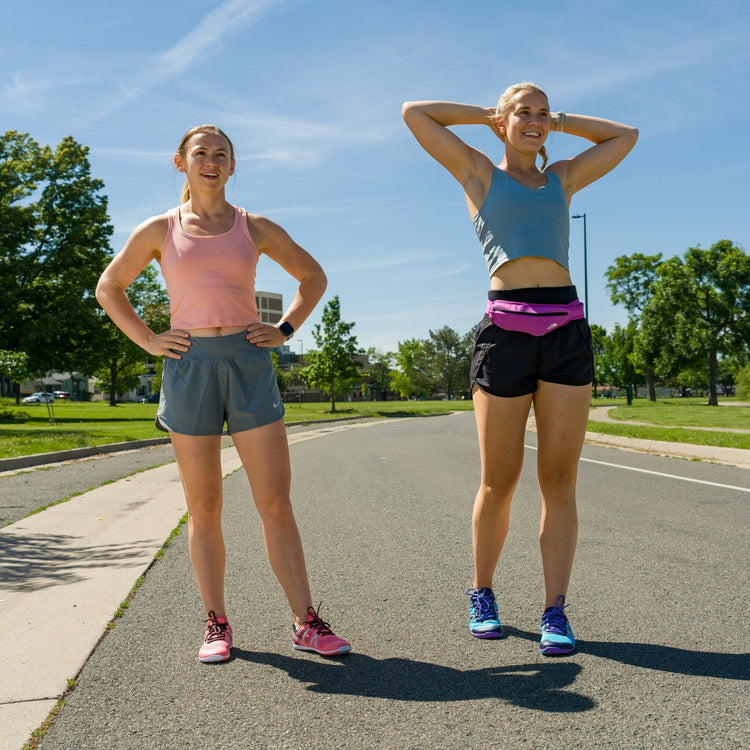
8 Running Recovery Tips to Improve Your Performance
Becoming a better runner isn’t just about running.Runners constantly push themselves, chasing after their next personal best – but when post-run soreness lingers, it can derail your training. If you’re constantly feeling fatigued or sore after you run, it may be time to evaluate your recovery routine.When it comes to training as a runner, recovery is so much more than rest.Proper recovery takes an all-encompassing approach that spans diet, sleep, strength training, and cardio. Of course, making time for a proper recovery routine can be challenging. Busy schedules make it tempting to cut your post-run recovery short.But neglecting your recovery is a mistake.The bottom line is, if you want to improve your performance, rest and recovery are just as important as the running itself. If you want to improve your speed, endurance, and hit new personal records, prioritize your recovery.Why Is Recovery Important for Runners?After a long run, the muscles in your body need to rest, rejuvenate, and replenish, so that they can adapt to your training. It takes time to recover from an intense workout. By allowing for running recovery you help the body withstand more training in the future. This allows you to become stronger, faster, and less injury prone.Without proper recovery, muscle damage can accumulate and you risk overtraining, which may lead to injury, stress fractures, soreness, and pain. When you do not allow for the full repair from your previous training, that can lead to compromised performance or injury.No matter your age or experience level, here are a few simple running recovery tips to implement as part of your running plan.8 Post-Run Recovery StrategiesWant your body to bounce back quicker after a run? Try incorporating these tips into your recovery routine.1. Do a Cool DownProper running recovery begins with a post-run cool-down. A cool-down period after running keeps the body moving but allows the heart rate to come down and your body to readjust after a grueling workout. A slow jog or a walk are both good cool down activities, and it only takes five to ten minutes to get the benefits.2. StretchMany runners do not spend enough time stretching after a workout. If you don’t take time post-run to stretch. It may be affecting your recovery. Stretching after a workout can prevent muscle soreness and injury and help speed up recovery. Spend a minute targeting each major muscle group in your legs: your quadriceps, hamstrings, calves, and glutes.3. Use a Foam RollerFoam rolling should be part of your post-run recovery. Using a foam roller after every run can help prevent soreness by preventing your muscles from tightening up. They provide soothing self-massage to relax muscles and help you recover more quickly so you’re ready for your next run sooner.4. Hydrate and ReplenishRunning increases the amount of fluid you need. Dehydration during and after your run will not only affect the performance of your run, but how well you recover. Ideally, you should drink at least 400 ml of water per hour while running. After a run, it’s best to drink 16–24 fluid ounces for every pound lost during your run.Urine color can indicate your level of hydration. Monitor the color to see whether you’re dehydrated. A pale yellow or light-colored urine typically means you’re sufficiently hydrated, while a darker or amber urine indicates dehydration.5. Do Light Cardio on Your Recovery DaysNot every recovery day should be a day of full rest. Active recovery days, where you do some light cardio, can help you recover more fully from your intense runs. Activities like walking, slowly jogging, doing yoga, or swimming, can help improve blood flow and keep muscles loose and limber without adding significant stress. Cardio is important for helping your body properly recover after a long run and improving your performance.6. Eat the Right FoodsPost-run nutrition is essential for run recovery. Eating the right foods will help with muscle repair and growth, while replacing energy expended during your workout. Ideally, you should eat a meal or snack on something shortly after your post-run cool down and stretching routine.Choose a meal or snack that contains carbs to replenish your lost glycogen stores, and protein to help repair and rebuild your muscles. Consuming carbohydrates after a workout helps to restore your energy reserves and aids in muscle recovery. Regular protein intake plays a vital role in muscle recovery and growth.To speed up recovery, consider adding anti-inflammatory foods like tomatoes, spinach, kale, collards, almonds, walnuts, salmon, strawberries, and blueberries.7. SleepFor optimal recovery, plan to get 7-9 hours of sleep each night. But sleep is not just about quantity. The quality of your sleep is extremely important for recovery. For better quality sleep, avoid using your phone before bed, and don’t consume foods with sugar or caffeine. You may also consider investing in blackout curtains.8. Wear Recovery FootwearIf you want to recover faster, consider your choice of footwear when you’re not training. Recovery shoes and sandals provide comfort after a long run, making them a smart choice for avid and long-distance runners. They could help you recover faster and reduce post-exercise leg and foot discomfort after a grueling run or workout.Your shoes should be designed to let your feet move freely, allowing them to bend, flex and feel. Xero Shoes are made with a thin and flexible sole that lets you receive ground feedback, so that your feet are more engaged when you move – think of them as providing a little light cardio for your feet. Barefoot shoes provide the natural comfort you need to recover better after a long run. Your feet will thank you!Browse recovery shoes and footwear from Xero Shoes.
Best Barefoot Shoes for Digital Nomads
Wearing super-light shoes can make you powerful as your connection to Earth grows with each step. Barefoot-inspired shoes fit this bill for nearly any use, whether on the trail, on the treadmill, on sandy shores or in your bedroom. Versatility and comfort are critical nowadays, so you need the best barefoot shoes for digital nomads.Here are eight excellent options from Xero Shoes. HFS II Speed Force II Ridgeway Z-Trail EV Kona Mika Prio Pagosa 1. HFS IIImagine going for a run and attending a birthday dinner afterward. You don’t have much time to change or room for extra clothes, so you need a versatile shoe for both occasions. Fortunately, the HFS II has your back with comfort and style.Xero Shoes upgraded the original HFS to produce an even more stylish sneaker for your lifestyle. The HFS II weighs only 8.3 ounces and is easy to run in due to its outsole inspired by tire treads. Plus, the top-tier comfort makes it one of the premier barefoot shoes for digital nomads.How can the HFS II feel super light but remain comfortable on your feet? The shoe equips a BareFoamTM layer to protect your feet and make your journeys easier. 2. Speed Force IIWhen high performance is necessary, you need the Speed Force II. This super-light shoe mimics the barefoot experience for your workout, morning commute and any other task you need to get done. At just 6.5 ounces per shoe, the Speed Force II is what you need for style, breathability and durability.Xero Shoes co-founder Steven Sashen designed the shoe with a Nike developer. He says it’s his preferred sneaker for training and racing. The Speed Force II joins other Xero Shoes with its wider toe box and non-elevated heel to aid your posture.3. RidgewayHitting the trail means you need maximum durability from the shoe and protection for your feet. Mud, rocks, dirt and more tax your boots and make them wear quickly, leaving you vulnerable to the terrain. You need hiking boots you can wear on your mountain adventures and at the restaurant for a friendly rendezvous.Xero Shoes presents retro-inspired Ridgeway, one of many barefoot hiking boots for men and women. . These shoes are waterproof and ready for the trail with their rugged construction and creative design. The 13-ounce boots are lighter than most running shoes you’ll find on the market, yet their comfort and functionality make them ideal for your trail-running needs.4. Z-Trail EVSometimes, the temperature gets too warm for tennis shoes. Your socks are necessary for comfort and protection, but the scorching ground makes you wish you had something lighter. Sandals are often too flimsy for athletic use, so how can you find a happy medium? The Z-Trail EV combines the versatility and durability of sandals for everyday use.While you might not associate sandals with hiking, the Z-Trail EV is ideal for the trail. The FeelLiteTM sole and the TrailFoamTM team up to provide traction, comfort and flexibility with your shoes. Each sandal weighs about 5.4 ounces, giving you the super-light feeling beneath your feet. Plus, the Z-Trail EV eliminates 70% of the unnecessary materials you typically see in sports sandals. These shoes utilize nylon sourced from recycled water bottles in their webbing, making them soft and quick-drying. You’ll enhance your comfort on the trail and support the planet with eco-conscious sports sandals.5. KonaFinding versatile shoes for casual wear is essential, as you need mobility when traveling from one place to the next. The Kona satisfies your flexibility needs as one of the best barefoot shoes for digital nomads. Pick up a pair for the beach, work or whatever your day calls for. This shoe reminds you of Hawaii’s Kona Beach and stays cool with its moccasin-inspired construction.The Kona is a solid shoe option for men because it blends into your desired style. Business casual meetings, friendly hangouts and dancing are only some of the occasions this shoe is appropriate for. The Kona provides flexibility thanks to the removable insole. The FeelTrueTM outsole protects your feet while feeling barely there as you stroll.6. MikaFreezing temperatures typically mean getting your snow boots from the closet. While practical, your shoes could lack in the style department or make you feel sluggish. Mika turns the tide by providing comfort, warmth and style in one boot.Heavy-duty boots could weigh multiple pounds and make walking in the snow feel arduous. However, the Mika only checks in at 12.3 ounces per boot, making each winter stroll much more manageable. These boots feel like they’re barely there, but the heat-reflecting warming insole and interior lining warm your feet. Plus, you get a water-repellant canvas for mitigating the cold precipitation on your path.The Mika from Xero Shoes is an excellent shoe choice for women because of its practicality and style. Its pink and black styles suit numerous winter occasions wherever you go.7. PrioWhile finding comfort in your shoes is one battle, getting the same for your kids can be even more challenging. Children’s feet are still growing, so they need flexibility and ergonomic design to ensure they can walk around school, the playground and your home without trouble. Some parents opt for barefoot shoes because research suggests children reap benefits from them.The kids’ version of the Prio makes shoes easier for your children, featuring a wide toe box and a natural fit. This shoe for children has more space between the lugs and a thinner sole to increase flexibility while protecting their feet from the ground. Plus, the shoe uses inspiration from huarache sandals with straps to prevent slipping on their heels. Your kids can use these shoes for playtime, running, climbing and other fun activities.8. PagosaCold mornings require a warm cup of joe and a comfortable pair of slippers. How can you combine comfort and functionality with slip-on shoes? The Pagosa’s faux wool warms your feet while providing flexibility through its collapsible heel. Step on the heel to make it a slipper, or slide your feet in to mimic a regular shoe. The Pagosa from Xero Shoes makes walking easy, whether around the house, the campsite or wherever your nomadic adventures take you.Comfort is key for the Pagosa, as its cozy feeling is unforgettable. The softness is ideal for older adults who desire increased comfort from their shoes but don’t want to go barefoot. A 2020 BMC Geriatrics research article suggests minimalist shoes could provide a suitable transition between shoes and barefoot for older adults.Finding the Best Barefoot Shoes for Digital NomadsShoe functionality is critical for the modern digital nomad. You need footwear to support your adventures on the beach, in the living room or at the office. Xero Shoes emphasize versatility with innovative style and design, ensuring you can take them from one scene to another. These eight barefoot shoes for digital nomads demonstrate flexibility without compromising comfort.The content of this post does not constitute and is not intended to be a substitute for professional medical advice, diagnosis or treatment. Always seek the advice of a physician or other qualified health provider with any questions or concerns you may have about your health or a medical condition. Beth is the Managing Editor at Body+Mind and a lover of all things health and wellness. She is a well-respected writer in the personal wellness space and shares knowledge on a variety of topics related to nutrition, fitness, holistic health and disease prevention. In her spare time, Beth enjoys cooking healthy recipes and trying out new fitness trends.
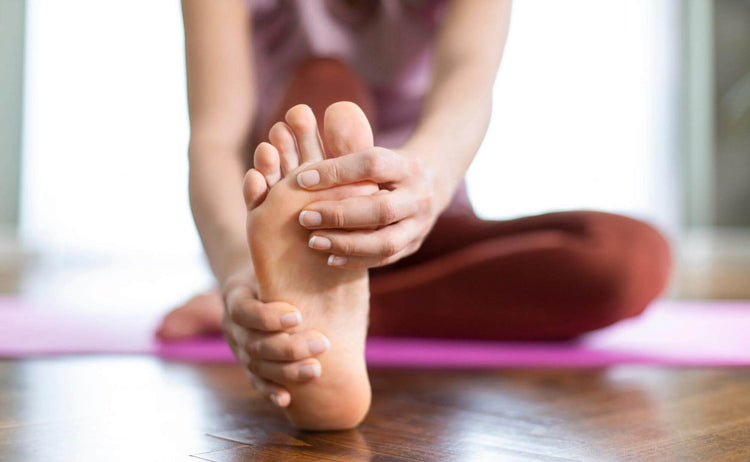
Why Barefoot Training Is Trending in 2024
Barefoot training is one of the hottest fitness trends in 2024. More fitness enthusiasts on social media — outside the mixed martial arts world — are discovering how significant gains are achievable without sneakers. Does barefoot training make sense for you? Does pumping iron while feeling the bare floor increase your strength? Should you go for a run without shoes on? Will you still go to the gym if everybody goes barefoot? Find out whether training barefoot is just a fad everyone will soon forget or if it’s genuinely beneficial. Is It Better to Train Barefoot or With Shoes? Barefoot and shoe training methods have pros and cons. What suits you depends on what you intend to do and your physical condition. Going barefoot gives you tremendous insight into your movements. Each foot of yours has more than 150,000 nerve endings at the bottom. They help you understand what you’re standing on and how you’re stepping on it. Your brain receives new sensory information. These sensations can inform your overall movement because you have a better idea of your body’s relationship with the space it occupies. The more you train with no or minimal footwear, the more you strengthen your feet and ankles. You gain better flexibility because they work together to keep you balanced and upright. This benefit can help expand your range of motion and enhance your stride. Activating the smaller muscles on the bottom of your feet can help you maintain proper posture and feel more stable. Training barefoot lets you recognize issues with specific body parts that are less noticeable when you wear shoes. For example, you may discover your ankles are less mobile than they should be. Such findings can help you determine where to focus your training next to address your weaker points. Regarding glute and core activation, barefoot training is biomechanically advantageous. It aids the mind-muscle connection, helping you work out more efficiently. On the other hand, shod training protects your feet from ground hazards. Shoe design innovations provide excellent support to feet and ankles — a must when undertaking most athletic pursuits. Footwear contributes to comfort, stability and motor control. Wearing the right pair of shoes can provide more traction on surfaces, helping improve your performance and boost your confidence. Somewhere in the middle is barefoot-inspired shoes. For instance, Xero Shoes’ barefoot footwear for women provides excellent ground feedback while offering great protection. How Do You Train Barefoot? Training or working out without shoes is promising on various levels but requires circumspection. Remember these three tips when transitioning from shod to barefoot training. 1. Ensure You're Injury-Free Regularly engaging the muscles in your feet makes them more immune to injury. Many fitness enthusiasts are going barefoot precisely to make them less prone to sprains and strains. However, your feet and ankles can only get stronger when they’re already uncompromised. Tossing your shoes when training or working out when nursing or recovering from a foot or ankle injury may do more harm than good. Take precautions if you have preexisting foot or ankle conditions. Some sprains, strains and breaks take more time to heal than others. For instance, a high ankle sprain usually requires physical therapy to prevent reinjury. This injury accounts for only 14% of ankle sprains and half of its cases take up to six months to recover. Monitor your injury’s progress to see whether you’ve completely healed. Self-assessment helps but isn’t always enough. Consult your health provider for expert advice before engaging in intense physical activity without foot and ankle support. Let your physician run some tests and closely examine you to determine whether you’re healthy enough to go barefoot. You may feel well, but your test results may reveal a cause for concern that can lead to a severe ailment when training without footwear. 2. Acclimate Your Feet and Ankles Take things slow if your doctor gives you the go-ahead signal to do barefoot training. Walking and running without shoes takes some getting used to. Give your feet and ankles ample time to adjust and gradually build strength. The runners who switch from shod to barefoot spend about two weeks walking around without footwear. After this initial period, they begin running in place and trying flat, smooth surfaces. Picking up your speed slowly and steadily and increasing your mileage by 10% max per week should be part of your routine. The transition may cause discomfort. Feeling sore is your body’s way of telling you you’re doing too much too fast, so dial back your barefoot training to help your feet and ankles adjust to moving without support. Wearing minimalist shoes can help ease your shod-to-barefoot transition. Unlike traditional running shoes, they have no high arch support and no thick soles, so they complement your body mechanics well. Many put on men’s barefoot performance footwear from Xero Shoes when training in the gym, on the track, on a pickleball court or in any environment. They’re super comfy and enjoyable to wear. More importantly, they give your brain the feedback it needs to help you move effectively and efficiently on any terrain. 3. Explore Various Barefoot Exercises Aside from walking, running and yoga, the most common barefoot exercises are squats, deadlifts, box jumps, stability ball exercises and single-leg stands. They show you can incorporate barefoot training into most workouts, whatever your fitness goals are. There’s a caveat — some gyms and health studios prevent you from training barefoot to keep their areas hygienic. Going barefoot outdoors is only advisable in some cases. Rocky surfaces that absorb the sun’s heat — such as concrete and asphalt — can jeopardize your foot or ankle health. That’s why investing in barefoot-inspired shoes for working out and weightlifting is wise. They can protect your feet from jagged terrain, but you can pleasantly feel they’re barely there. You may forget you’re wearing them when you begin training. Pieces of minimalist footwear are stylish enough to earn a spot in your shoe collection, but one pair is usually enough. You can wear these shoes when strolling, running or playing sports to cover your feet while enjoying the many benefits of going barefoot. Embark on Your Fitness Journey Barefoot Working out without shoes may look and feel strange at first, but it has numerous merits. While barefoot training isn’t for everybody, it’s worth considering if you have the feet and ankles for it. The content of this post does not constitute and is not intended to be a substitute for professional medical advice, diagnosis or treatment. Always seek the advice of a physician or other qualified health provider with any questions or concerns you may have about your health or a medical condition. Beth is the Managing Editor at Body+Mind and a lover of all things health and wellness. She is a well-respected writer in the personal wellness space and shares knowledge on a variety of topics related to nutrition, fitness, holistic health and disease prevention. In her spare time, Beth enjoys cooking healthy recipes and trying out new fitness trends.
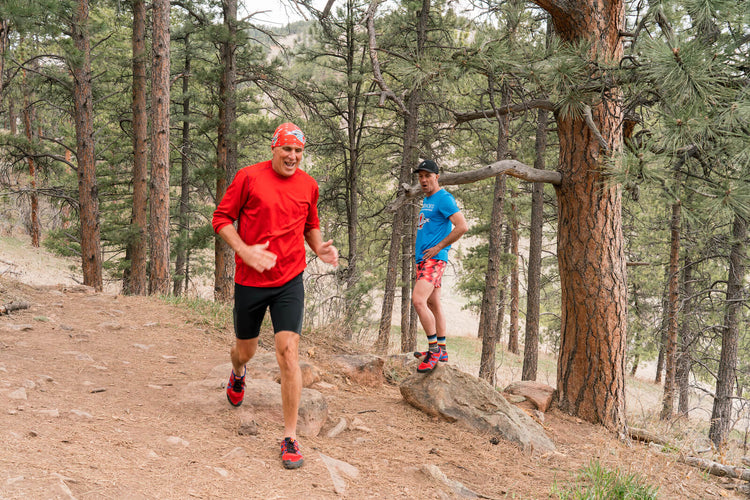
Year Zero with Born to Run
Year Zero for Christopher McDougall? He couldn't even run, let alone tackle a 50 mile race in the Copper Canyons with the Tarahumara.But then, he met Coach Eric Orton, who taught him the truth about running stronger: it starts with a 90-day reboot. That's exactly why the duo wrote Born to Run 2: The Ultimate Training Guide. Christopher's tale in Born to Run wouldn't have been written without guidance from Eric, a renowned running coach and ultrarunner himself. The sequel gives runners of all levels the tips they need to run faster and further, for longer. Runners often think of winter as a time to rebuild their base. But just as important as it is to ramp up mileage slowly, you need to focus on key elements: form, fitness, focus and footwear.So what is the 90-day Reboot? Anyone who gets a copy of the book gains access to Training Peaks, where you'll get a daily schedule of workouts, designed by Coach Eric.You'll learn form drills like: Rock Lobster to practice optimal running form and eliminate overstriding by running to the beat of the famous B-52s song while your Running Logs to increase cadence, proper foot strike, stance leg, and push off. 100 Up to train active muscle patterns in running, specifically for forefoot landing and knee drive. You'll also improve run-specific strength exercises (no weights required), through exercises like: Foot Core to stabilize from the ground and improve balance and foot strength. Run Lunges is the golden exercise for strength, stability, mobility, and arm synchronization. Single-Leg Wall Squats to restore equilibrium between your quads and glutes as you learn to initiate squat movement from your hips and glutes. A Sneak Peek of the #1 Exercise Runners Love in Born to Run 2:Special Born to Run Shoe + Book Bundle For a limited time during the month of December, buy a pair of Born to Run Xero Shoes (Mesa Trail II or Zelen), and get Born to Run 2: The Ultimate Training Guide, for $20. Click here
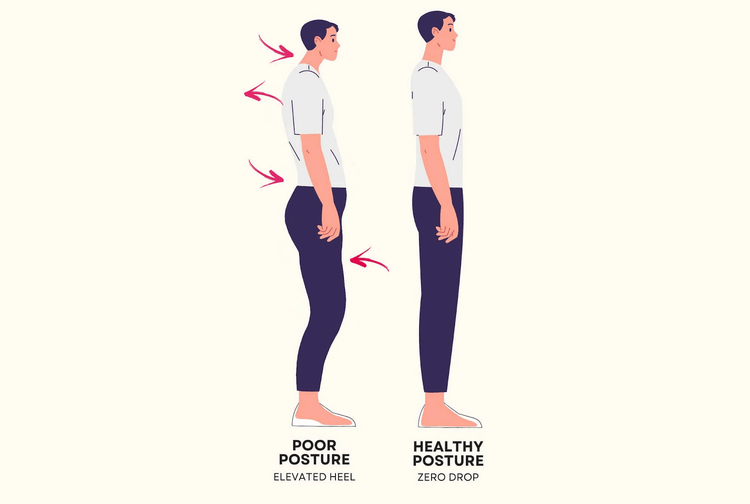
Can Barefoot Shoes Help with Posture? What to Know
How Can Barefoot Shoes Help With Posture? Excellent posture is not just about your physical appearance - it’s a cornerstone of your long-term health. And believe it or not, the secret to achieving better posture lies beneath your feet. The footwear you choose can negatively impact your posture. The right type of shoes can help correct posture, providing comfort and better alignment for your body. Let's take a look at posture to see how the wrong footwear can cause problems, and how the right footwear could help your posture. What Does Healthy Posture Look Like? Proper posture means that your spine should be properly aligned when you stand. There are natural curves in your lower back, mid back, and neck, but excessive curvature in any of those places or flattening in any of those places can be problematic. There are two types of posture: dynamic and static. Dynamic posture is how your body aligns during movement, for instance, walking, running, or bending over to pick up something. Static posture is how your body aligns when you are not moving, like sitting, standing, kneeling, or lying down. How Bad Posture Affects the Body Many people take good posture for granted until they notice negative effects. Poor posture can have far-reaching consequences that affect our physical well-being. Here are some of the effects of bad posture to be mindful of: Misalignment of the musculoskeletal system Poor circulation Imbalances in the body Pain in the back or neck Increased number of injuries Stress on the ligaments and joints Lack of range of motion Decrease flexibility Tight muscles Weakened muscles Difficulty breathing Poor balance Decreased efficiency in daily life or athletic performance What Causes Bad Posture? Several factors contribute to poor posture. You may be doing some of these things and not even realize it. Here are some common causes of poor posture: Prolonged periods of sitting: Having a sedentary lifestyle, you spend prolonged periods sitting or hunching over a desk, which can negatively affect posture over time. Not getting enough exercise can weaken the muscles that support your posture. Carrying excess body weight can strain the musculoskeletal system. Poor ergonomics in the workplace. This can commonly include improper desk setup, sitting for long periods of time, or incorrect positioning of computer screens. Sleeping position: Sleeping in positions that do not support proper spinal alignment. Stress, anxiety, and emotional tension leads to muscle tightness and increased muscle tension. Wearing improper footwear. Shoes can affect posture, disrupting your foot's natural ability to offer a stable base for your body. At this point, you may be thinking, “what is improper footwear?”. We’ll review characteristics of shoes that can negatively affect posture, and what kind of footwear can help you have correct natural posture. The Problem With “Normal” Shoes Many “regular” shoes can actually cause posture problems.. Here’s how shoes can impact posture: Elevated heels of “normal shoes” move your center of mass forward. This alters the body's natural alignment and can put extra pressure on the balls of the feet, ankles, hip, knees, or back to adjust for that change in center of mass. Padding that “normal shoes” typically have can negatively affect your posture. When foam cushioning wears out unevenly it can misalign your feet and ankles, which creates issues for your knees, hips and back. The narrow toe box of most conventional shoes can squeeze toes together and hinder natural toe splay. This can affect the overall stability of the feet, affecting the body's balance and posture. Thick, Stiff Soles reduced sensory feedback affecting proprioception and balance. Your feet need to provide sensory information to your brain so you can move your body effectively and efficiently. When we lose touch with the ground, our body may lose its ability to make micro-adjustments that help us maintain proper dynamic posture. How does this compare to barefoot shoes? They don’t have these issues. How Barefoot Shoes Can Help With Posture Barefoot shoes are designed to help improve your posture. While regular shoes can negatively impact posture, barefoot shoes mimic the feeling of being barefoot while providing the appropriate protection for your feet. Barefoot shoes can help improve posture in a few ways: No Heel-Toe Drop: Most shoes have an elevated heel, which shifts your center of mass forward. This forces you to adjust with your ankles, knees, hips, and back. Where you will feel the stress depends on which one of these joints is least supported by your muscles, ligaments, and tendons. Barefoot (or “minimalist” ) shoes do not elevate the heel. This can keep the body in a neutral alignment and keeps the body weight centered over the feet. Thin (but protective), Flexible Soles: Barefoot shoes have a thin yet protective sole, so you can safely FEEL to ground and give your brain the feedback needed to make dynamic postural changes. Wider, Foot-Shaped Toe Box: In the same way spreading your fingers provides balance doing pushups, spreading your toes provides you with better balance while you stand, walk or run. Barefoot shoes feature a wider toe box, which gives your toes the freedom to spread out for better balance, stability, and posture. Additional Tips to Improve Posture Aside from wearing barefoot shoes, here are some other tips to improve your posture that you can begin including in your daily routine: Be Mindful: Being aware of your posture, whether sitting or standing, is essential. Take a moment to check in with your body throughout the day. Make sure your body is properly aligned. Take Regular Walking Breaks: If you have a sedentary desk job, it's important to incorporate movement throughout the day. Set reminders to get up and take short walks, stretch, or do simple exercises. Vary your movements: By doing a variety of movements, you can help strengthen the muscles that support proper posture. This promotes muscle balance, flexibility, and core stability - all of which contribute to improved posture. Maintain a Healthy Weight: Carrying excess weight can place additional stress on your muscles, joints, and ligaments, affecting your posture. Strive to maintain a healthy weight through a balanced diet and regular exercise. What people are saying about improved posture and barefoot shoes from Xero Shoes.. “I work as an ER charge nurse and I’m on my feet nonstop for 12 hour shifts. I recently purchased the prio shoes to use for work and they have been amazing. I was even told that I appear to be walking with better posture. Hopefully I can help others discover the benefits of these shoes.” “I’m on my feet for 12+ hours and I needed shoes that give my feet plenty of support and that fit my foot. The barefoot feeling is ideal for my posture and for the anatomy of my foot. This is my second pair of Xero shoes and they did not disappoint!” Making the Switch to Barefoot Shoes If you’re ready for improved posture, it’s time to slip into a pair of barefoot shoes. Switching from a “normal” shoe to a barefoot shoe may be a bit of an adjustment, given the differences between the two. The phrase “transition slowly” is a common recommendation people will tell you. And while this isn’t wrong, transitioning to barefoot shoes is less about how quickly or slowly you make the change, and more about HOW you make the transition and not the length of time it takes. FEEL What You’ve Been Missing; Natural Comfort, Posture, and Health Barefoot footwear helps you FEEL the ground you’re walking on, and comes in many different styles of shoes, sandals and boots. Not sure what type or style of shoe you want? Use this shoe finder quiz to find a few recommended shoes for you. The content of this post does not constitute and is not intended to be a substitute for professional medical advice, diagnosis or treatment. Always seek the advice of a physician or other qualified health provider with any questions or concerns you may have about your health or a medical condition.
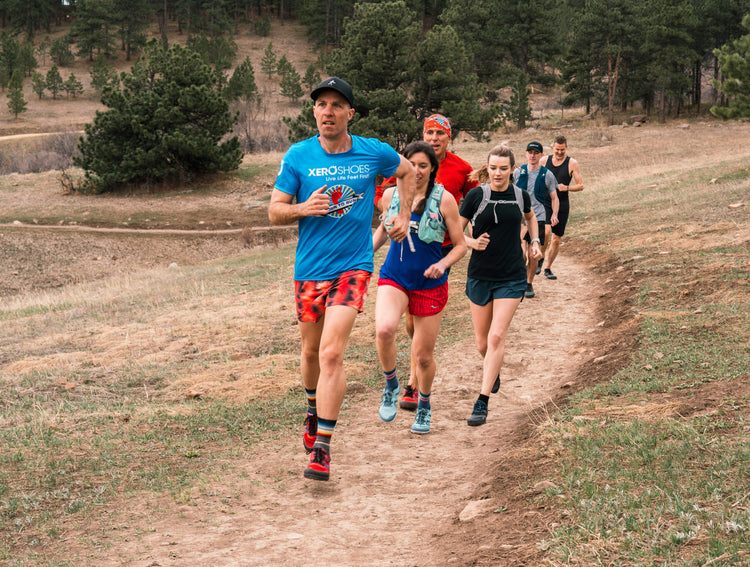
Why Every Runner Should Wear a Minimal Shoe... sometimes
Xero Shoes' partner, renowned running coach and author Eric Orton, coaches elite and age group athletes, including runners for distances from 1500m to 240 miles, Ironman triathletes, cyclists, and more.In his latest article for Marathon Handbook, Eric shares why runners should wear a minimal shoe... sometimes. Eric's top reasons: Minimal shoes give your body instant feedback on running form and can improve efficiency Use minimal shoes as a tool to build strength and stability Minimal shoes not only feel lighter, but less cushioning between your feet and the ground helps you to lock in your natural running Unlock the mechanics of forefoot and midfoot strikes, which contribute to improved efficiency and biomechanics Watch the video below, and read Eric's full article here.
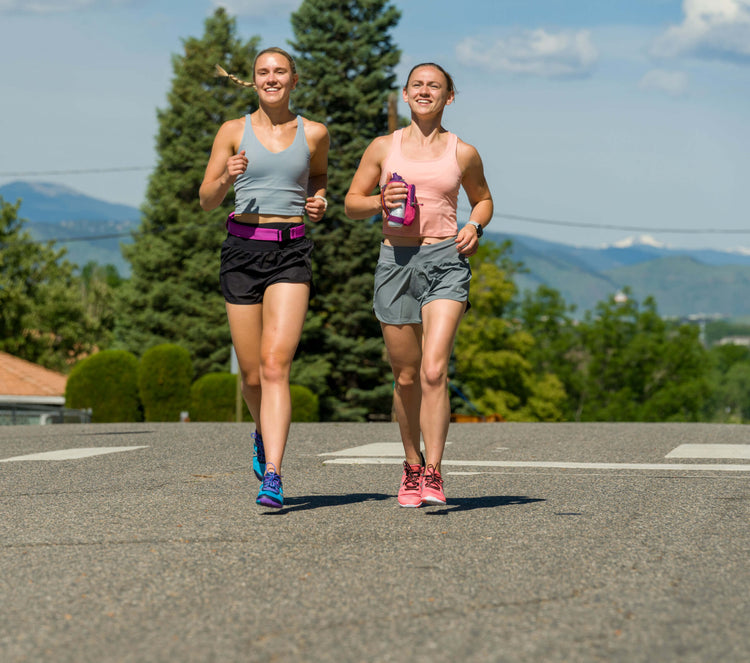
Organizations That Use Running to Empower Women
For women, running can be a powerful tool for empowerment and self-discovery. Running teaches women many physical, mental, and even social skills, when running in a group. It helps build confidence, reduce stress, and promote a sense of accomplishment and independence. Women of all ages join running groups that can help strengthen community bonds and offer a supportive environment for self-growth. Running delivers lessons on confidence and character and provides strength in the face of adversity. Running is one of the most accessible activities in the world - all you need is a good pair of running shoes and proper clothing. This article will show you how running can empower you, introduce organizations that recognize the power of running, and use running to make a difference in women’s lives around the world. Whether you're an experienced runner or just starting out, let's celebrate the power of running to transform lives and communities. What Factors Are Important For Women's Empowerment? Empowerment is the process of becoming stronger and more confident, especially in controlling one's life and claiming rights. The European Institute for Gender Equality defines women's empowerment as "the process by which women gain power and control over their own lives and acquire the ability to make strategic choices". Several factors contribute to women's empowerment. Some of the most important include: Access to Education Women who have access to education are better equipped to make informed decisions about their lives. This helps them participate in the workforce, and advocate for themselves and their families. Economic Empowerment Women with financial independence are more likely to have control over their lives and make decisions about their futures. This can be achieved through equal pay, access to credit and loans, and job training programs. Healthcare Access to quality healthcare is critical for women's well-being and ability to lead healthy and productive lives. This includes access to reproductive and maternal health services. Gender Equality Women face gender bias in education, employment, politics, and more. Achieving gender equality requires breaking down systemic barriers and addressing gender-based discrimination. Safety Women need to feel safe in their homes and communities in order to fully participate in society. This includes addressing issues such as domestic violence, sexual assault, and harassment. Representation Having women represented in leadership roles is crucial for ensuring that their needs are met. Empowering women to be part of decision-making processes, instead of others speaking for them, will help their voices be heard. Benefits of Running for Women Regular running can provide a wide range of mental and physical benefits for women to improve all aspects of their well-being. Physical Health Many people consider running simply a way to burn calories and lose weight. However, there are many other physical benefits besides weight loss. As a cardiovascular exercise, running improves heart health while reducing blood pressure and the risk of chronic diseases. Builds Confidence Completing a challenging run or race can build confidence, giving women a sense of accomplishment and achievement. Running can also boost women's self-confidence to feel more comfortable and confident in their bodies. Reduces Stress Running can relieve stress, providing an outlet for pent-up emotions. Running also can reduce stress by promoting the release of endorphins, which improve mood. Improves Mental Well-being Running can be a form of meditation and can have long-term benefits for mental health. Running a few times a week gives women a space to clear their minds and focus on the present moment. Accomplish Goals Women face different challenges in life than men. To overcome challenges, it’s important for women to set goals and experience the satisfaction of achieving them. The same is true for running performance, which requires runners to overcome physical and mental obstacles. By setting goals, runners can create a clear action plan towards accomplishing those objectives and ultimately experience the sense of achievement that comes with meeting those goals. Learn Resilience Not every run will be your best, especially if you're new to running. Setbacks may happen, but this is a great way to learn resilience. Getting better at something means getting back up after you’ve been put down and trying again. Running teaches women ways to overcome stress and bounce back from adversity - a great skill to help anyone overcome life’s challenges. Build Bonds and Community Women’s running clubs and track and field teams provide a sense of community, empowering female athletes. Being a part of the wider running community offers women a supportive social group and role models to look up to. Empower Other Women Running is a great solo activity, but most runners know the importance of having a good running community. In group settings, running helps women empower each other. Women’s running groups are the perfect instance to build other women up. Organizations That Are Helping Females Achieve Empowerment Through Running Here are some organizations that are empowering women around the world. Jay Ell Alexander, Black Girls RUN! Jay Ell Alexander is the owner and CEO of Black Girls RUN!, an organization that empowers women of color through running in a supportive environment, with over 250,000 members across the United States. She is a public relations practitioner committed to giving back to the local community through her passion for running, health, and fitness. What is the goal of Black Girls RUN? “Black Girls RUN! started as an online blog in 2009 as a way to empower Black women to participate in the sport of running events across the country and provide spaces for women to come together on their fitness journey. Through the power of running, community and empowerment, we bring awareness to the health disparities in the Black community. We dispel the myths that black women are unhealthy and not physically active.” How does running help empower black women to overcome challenges they may face? “There’s a huge misconception that black women don’t run. Black Girls RUN! brings women together all over the country to increase representation on the pavement. We are moving and motivating women to change the narrative of what running and health looks like for black women. We provide inspiration and serve as a resource for women to become the best version of themselves. Black Girls RUN! aims to create healthier communities to change the health statistics for black women and create healthier women for generations to come.” Girls on the Run Rockies Girls on the Run Rockies inspires girls of all abilities to reach their full potential through running and team support. They teach life skills such as self-confidence, resilience, and connection with peers. Dedicated volunteer coaches combine physical activity with these lessons to empower girls and create a strong community. We interviewed Lauren Pietrek, Development and Marketing Director for Girls on the Run Rockies. What is the goal of Girls on the Run? “Girls on the Run is a nonprofit organization with a mission to inspire and empower girls in 3rd - 8th grade through the power of running. Our program combines training for a 5K event with a research-based curriculum that focuses on developing essential life skills and fostering positive self-esteem. The goal of Girls on the Run is to equip girls with the tools they need to navigate challenges, build healthy relationships, and boldly pursue their dreams. We create a supportive community where girls can embrace their uniqueness, celebrate their strengths, and grow into strong, capable women.” What role does running play for girls to overcome challenges and learn new life skills as they grow older? “Girls on the Run uses running as a tool to build confidence and teach life skills by setting and achieving running goals, fostering a growth mindset, and employing a curriculum that addresses topics like self-care, empathy, and teamwork. Through running, girls develop resilience, self-belief, and a sense of accomplishment. Our program creates a supportive environment for girls to learn and practice important life skills while running with their friends. We believe the finish line of our 5K is just the beginning of a lifetime of self-confidence.” Whitney Heins, founder of The Mother Runners Whitney Heins is a lifelong runner, and founder of The Mother Runners, (a resource for moms who run), VDOT-O2 certified running coach, 2:54 marathoner, host of The Passionate Runner podcast, and most importantly, a mom of two beautiful, crazy kids. What is the goal of The Mother Runners? “My mission is to help fellow moms be their best selves on and off the road. When we do something that makes us feel good about ourselves, that positive impact has a ripple effect in all we do. Running is good for our physical and mental well-being and teaches our kids valuable lessons like how to take care of yourself and work hard towards your goals.” How does running empower mothers to overcome challenges they may face in their daily lives? “Running helps moms see that they are stronger than they realize. This ability to have patience and persevere no matter what carries over into challenges moms face big and small—whether it’s withstanding another toddler meltdown or facing serious illness or tragedy related to our children. It also recharges us so we can face each day fresh.” In addition to free training plans and customized coaching, she provides a community for sharing experiences and pursuing fitness goals. Keri Wallace, Girls on Hills Keri Wallace is the co-founder of Girls on Hills, an organization that empowers women with the skills and confidence to become independent in the mountain environment. Girls on Hills provides guided runs in the Scottish Highlands, Lake District and Snowdonia and are aimed at women who want to break free from road running and run to the mountains. What is the goal of Girls on Hills? Girls on Hills aims to empower women with the skills and confidence they need to become more independent in the mountain environment. We hope to encourage more women to participate in the sport of trail and mountain running to reap the health and well-being benefits associated with exercising in wild spaces and time spent in nature. We use experienced female running guides to teach navigation, movement and mountain safety skills on upland terrain, from trail to technical mountain ridges. We believe that 'empowered women empower women' and our guides are instrumental in helping us inspire women to try new things. We also advocate for greater understanding of inequities and better support for women to help reduce the gender gap in participation in ultra-distance running and skyrunning in the UK. In Your Opinion, how does trail running empower women to overcome challenges in their daily lives? Trail running is liberating! - journeying through nature with all you need on your back, making decisions about your route, destination and safety. This kind of control can often be lacking in people's lives, and today's health and safety culture breeds a level of risk aversion that is limiting and sometimes debilitating. At Girls on Hills, trail running is about understanding and stretching what your body (and mind) can do! Often women find they are far more capable than they expected. Another kind of empowerment is learning new skills, such as self-navigating or moving efficiently over technical terrain. We find that running in a supportive and like-minded group can help build community and self-esteem, but running solo can build resilience and self-confidence. All these elements of empowerment are powerful and extend beyond running into lives at work and at home. Inspirational Female Runners Who Changed History Here are some iconic women runners whose effect empowered others and changed history for generations of women after them. Their confidence and resiliency paved the way for future female runners. Wilma Rudolph Wilma Rudolph overcame polio and scarlet fever as a child to become one of the fastest women in history. As a young girl who struggled to walk, she truly defied the odds as the first woman (and first African American woman) to win three gold medals in track and field at the same Olympic game. At the 1960 Summer Olympics, Rudolph won gold in the 100- and 200-meter sprint events and the 4 x100-meter relay. Her incredible life story has inspired generations of women long-distance runners. Kathrine Switzer Before the Boston Marathon allowed female participants, 20-year-old Kathrine Switzer showed up to the race in 1967. She signed her entry form under the alias "K.V. Switzer" as the first woman to win a competition. Despite being physically pulled off the course by multiple men, including the race's director, Kathrine became the first woman to enter and finish the marathon with an official race number. Switzer is credited for changing the sport of running by opening up opportunities for female long-distance runners. Today, she continues to pave the way for other female runners, inspiring women across the globe and winning the New York City Marathon in 1974 with a time of 3:07:29. Joan Benoit Samuelson Joan Benoit Samuelson is an iconic American runner and olympic gold medalist. She won a gold medal as the first-ever women's marathon champion at the 1984 Olympic games - just 17 days before she had knee surgery, calling into question whether she would participate in the event. On race day, she was able to push from within, taking the lead at Mile 3 and never giving it back. Her stunning effort is commended and inspired by long-distance runners. Joan also held the fastest time for an American woman at the Chicago Marathon for 32 years after winning the race in 1985. All You Need Is a Good Pair of Shoes The good news is, you don’t need much equipment to run - just a pair of running shoes on your feet. Your running journey begins by finding a pair of shoes that are both durable and comfortable - shoes you can wear for (literally) thousands of miles! Barefoot running shoes prioritize natural movement and allow your feet to move and flex as they were designed to, while still offering a layer of protection. A barefoot feeling allows your feet to get the ground feedback you need to become a confident, empowered runner. Barefoot shoes have important characteristics that let your body do what’s natural, and let your feet bend, flex, move, and FEEL. Compared to traditional running shoes, Xero shoes have: No heel lift A wide toe box to let your toes spread No unnecessary cushioning An extremely flexible sole that gives you protection but is thin enough to let the nerves in your feet safely FEEL the ground and be more connected to the earth. When it comes to running shoes, durability and style should go hand in hand. That’s why we offer a range of options that not only look great but can handle any terrain you will be running on. Women’s road running shoes: Prio HFS Zelen Women’s trail running shoes: Mesa Trail II TerraFlex All of our shoe models are backed by a 5,000-mile sole warranty. Explore our entire collection of barefoot shoes for women. In Closing Running is used as a tool for empowerment and self-discovery for women across the globe. It is an activity that pushes you to become resilient, confidence dedicated, and motivated. Through the work of these incredible nonprofits, women are being empowered and supported to reach their full potential through running. It is up to all of us to continue this work and support women's empowerment in our communities and beyond. There are many women’s running groups that you can find locally to join that welcome all abilities. You get experienced coaches and build a sense of community through running. Whether you run in a group or solo, we hope women use running as an activity of empowerment to be the best versions of themselves.
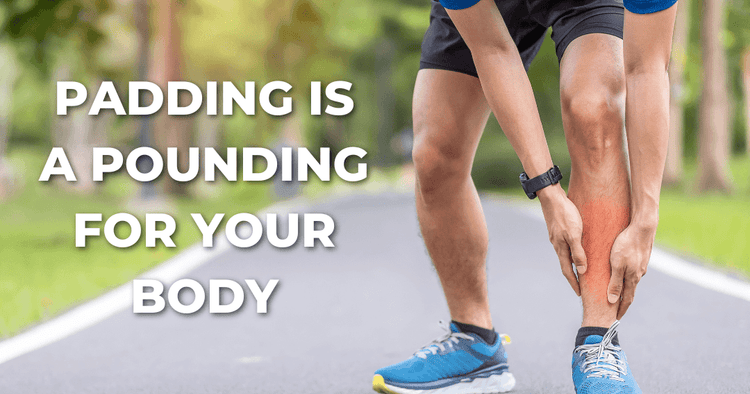
Are Cushioned Shoes Bad for Your Joints?
Big shoe companies will try to tell you that all that padding and “motion control” technology is helping to protect you from impact. A new study from Oregon State University found the opposite. You can read all about it in this New York Times article: “Super-Cushioned Running Shoes are All the Rage, But Aren’t Foolproof.” READ THE FULL ARTICLE If you hit the article-limit paywall, here are the big takeaways on why cushioned shoes are bad for your joints: Runners in “maximalist” cushioned running shoes hit the ground harder, and pronate more (roll their ankles inward), than runners in neutral shoes This tendency gets WORSE the more you run in those shoes Super-maximal shoes “tend to be more unstable” than low-to-the-ground barefoot running shoes, even on roads and track Xero Shoes Make Happier, Healthier Runners If there’s a common thread among the tens of thousands of Xero Shoes reviews, it’s this: Nobody started wearing Xero Shoes because of any special technology. They just wanted to move better, and feel better. And guess what: They do! Skeptic turned believer! “I love that I can feel the ground beneath me when I walk, and it has really increased my proprioception so I’m not wobbly or tripping. I usually would kick my shoes off and go barefoot as soon as I got home, but now they don’t come off until I go to bed.” - Timothy C Amazing, life-changing shoes “I bought them because I stand all day. They are perfect. Changed my life in two days! I will buy them again.” - Donna C. Amazingly comfortable “I feel safer walking the trails wearing Xero Shoes - especially navigating rocky areas. I own 5 pairs and love them.” - Linda T OMG Great shoes. They really do make my feet feel good. Thanks! - Shane T New to running in Xero Shoes? Start here. You’ll have a better experience “transitioning” from maximalist or cushioned shoes to in Xero Shoes if you have: A good idea of what to expect A plan to follow Get both in this article from Xero Shoes CEO Steven Sashen, How to Transition to Barefoot Shoes. START OFF RIGHT
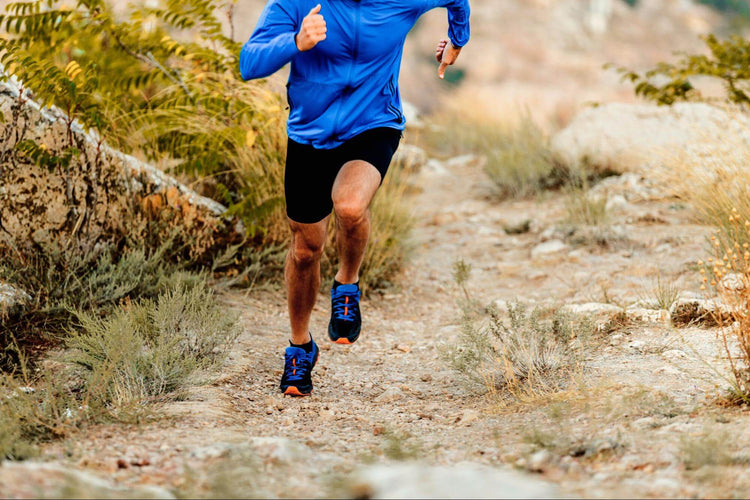
How Runners Can Support the Environment for Earth Day
Runners who want to help preserve and protect the environment can take several steps to become more eco-friendly. Here are some inspiring ideas runners can do to help support the environment.Does Running Help The Environment?Running has some unique features that already make it a sustainable activity, including:Carbon-NeutralityRunning is a carbon-neutral activity that doesn't require any fuel or energy other than your own. Choosing to run means that you can reduce your carbon emissions and help create a cleaner environment.Encourages Sustainable FitnessRunning is a minimalist activity that requires little equipment or resources. By embracing minimalism, runners can contribute to a more sustainable lifestyle and promote the idea of living within our means.Inspires Community InvolvementRunning events and clubs can bring together individuals with a passion for health and fitness as well as sustainability. These communities can inspire collective action and advocacy for environmental issues.Promotes Green SpacesRunning can take you to places where you can appreciate the beauty of nature. By doing so, you are helping to promote the importance of parks and green spaces, natural resources, and the need for their preservation.Supports Eco-Friendly EventsMany running events have embraced eco-friendly practices, such as recycling, composting, and reducing waste. By participating in these events, runners can support these initiatives and encourage others to adopt similar practices in their daily lives.How To Help The Environment As A Runner (10 Ways)1. Throw Away Your TrashThrowing away their trash is a pretty easy way runners can support the environment. Beyond trail hiking, litter is often left behind by road running in cities. Just because it's widely accepted to leave trash on the ground doesn't mean you should. Try these tips: Always carry a small reusable bag or pouch to store your trash during your run. If you find trash while running, pick it up and dispose of it, or recycle it if possible. Avoid single-use plastic to reduce the amount of plastic that ends up in landfills. Support products that are made from 100% recycled materials. Educate your fellow runners and friends about the importance of properly disposing of trash and encourage them to follow suit. 2. Reduce Plastic Waste From Water BottlesInstead of using water bottles during or after your run, consider switching over to a 100% plastic-free water bottle. There are several non-plastic water bottles for runners. Many of these manufacturers not only use sustainable practices, but they also give charitable donations to support sustainability non-profit organizations.Organization Spotlight: Plastic Free JulyPlastic Free July® is a significant program developed by the Plastic Free Foundation. Its purpose is to help us move closer to our goal of creating a world free of plastic waste.3. Participate in Park Clean-upsA great way to give back to your community is to find a park clean-up in your neighborhood. You could even organize your own. Local volunteers of all ages can work together to clean and pick up litter in a community park. Volunteering is a great way to keep the parks and green spaces you run in clean and beautiful. 4. Find Plogging GroupsAnother way to dispose of trash is by participating in plogging, but what is it exactly?? It is an activity that combines jogging and cleaning up trash. While running, they collect and properly dispose of any litter found on the ground. The term “plogging” originates from the Swedish verbs “plocka upp” (pick up) and “jogga” (jog).Organization Spotlight: Natural RestorationsNatural Restorations is an Arizona-based 501c3 nonprofit organization founded in 2015 by husband and wife team, Justin & Nicole Corey. Their mission is to remove trash and graffiti from outdoor recreation & wilderness areas, revitalize natural areas through replanting projects, and enrich the lives of military veterans and other community members. They have removed over 1.5 million pounds of trash from outdoor spaces and will be hosting their 8th annual Earth Day Lower Salt River Cleanup this Saturday, April 22nd. Plogging combines picking up trash while jogging and it is a great way for runners to make a positive impact on the environment and in our communities. With increased concerns about pollution, people everywhere are making their workouts good for the Earth's health too! Instead of cursing trash as you jog by it, why not pick it up? It's like a treasure hunt every time you head out. The action of picking up trash stretches the back, hamstrings, and calves. It's multitasking at its best!DonateFacebookInstagram 5. Donate Old Running GearDonating old gear is an excellent way to reduce environmental impact. It allows runners less fortunate to have safe footwear they may not be able to afford. Donating old clothing helps reduce waste in landfills and decreases the emission of methane into the air.Organization Spotlight: Soles 4 SoulsSoles 4 Souls turns old or unwanted shoes and clothing into good use, preventing them from going to waste. providing relief, creating jobs, and empowering people to break the cycle of poverty. Collect shoes and clothing to distribute to people in need across the US and worldwide. This protects the planet, putting used goods to others who need them instead of going to a landfill.Donate ShoesFacebookInstagram 6. Advocate for Environmental PoliciesAdvocating for environmental policies can be a powerful way for runners to make a positive impact on the planet. Advocacy can take various forms. One of them is reaching out to local and national representatives, joining protests or rallies, and backing environmental organizations.One way to get started is by researching environmental policies that are currently being proposed or debated in your area. This might include initiatives related to renewable energy, reducing your carbon footprint, protecting natural resources, or promoting sustainable transportation options.Once you have identified relevant policies or initiatives, consider reaching out to your elected representatives to express your support or concerns. This could involve: Writing letters or emails Making phone calls Scheduling in-person meetings with your representatives or their staff Organization Spotlight: Runners for Public LandsRunners for Public Lands is on a mission to create a sense of belonging, a connection to the environment, and to spark activism in our running communities.When college professor Vic Thasiah read the notable article “No Free Lunch: Trail Running and the Public-Lands Debate” by Mike Foote in Trail Running Magazine, he decided to take action. On Earth Day in 2019, he founded Runners for Public Lands as the national-level nonprofit dedicated to organizing runners - the largest recreation group in the US - to care for the environment. Today, Runners for Public Lands continues to build inclusive running communities dedicated to protecting the environment and is actively creating opportunities for runners to get involved and give back.Founded in Ventura, CA, RPL has established a strong regional presence, but earlier this month, they officially launched their Ambassador Program in Colorado to begin growing a movement of runners throughout the country. RPL Ambassadors will host inclusive runs, organize educational and volunteer events, and activate runners to steward and protect the lands they run with. Keep an eye out for more to come as this movement grows into new communities throughout the US!So, how can you join this movement to protect public lands and equitable access to nature? Volunteer for trail days and local stewardship in your community. Get informed about ways to protect the people and places you love to run with by: downloading RPL’s toolkits, reading RPL’s event resources, and learning about RPL’s Everyone Runs Funds - a grant that assists disadvantaged runners chasing their run dreams. Follow RPL on social media @runners4publiclands and sign up for their newsletter. Become a sustaining member of Runners for Public Lands. Make a one-time donation to support RPL programs and expand their presence in the US. Stayed tuned for specific RPL calls to action on national-level policies impacting runners and protecting public lands. Donate hereFacebookInstagram 7. Run or Walk to PlacesRunning is a great alternative mode of transportation to reduce carbon dioxide emissions from cars. Fewer miles driven can have a big impact on greenhouse gas emissions. Running and walking are the most energy-efficient options. However, if your destination is too far, consider riding a bike or using public transportation when possible. 8. Attend Sustainable Road RacesMany road races are getting serious about being environmentally friendly. Road races can get littered with trash, including cups. Instead, some races opt for reusable, compostable, or biodegradable cups at water stations. Road races are also moving paperless registration.9. Run for SustainabilityRoad races are not always set up with sustainability in mind. However, there are many races you can take part in that prioritize sustainability. Some park organizations will raise money with a 5k or 10k race. Of course, you can also raise money for an environmental charity.10. Wear Sustainable Running ShoesWear shoes made from sustainable materials that are ethically sourced and built to last a long time. Most “sustainable shoes” are not completely sustainable, even if they claim to have an ethical code of conduct. Greenwashing is a marketing tactic used by companies to make their products appear more environmentally friendly than they actually are. It involves making false or misleading claims about the environmental benefits of a product, service, or effects of the supply chain.At Xero Shoes, we’re sensitive to the ecological impact of footwear manufacturing. We are truthful about our environmental impact and share our green story only when it's authentic. We do not participate in the deceptive practice of greenwashing. Becoming a More Sustainable RunnerBecoming a more sustainable runner is a powerful way to contribute to the health of our planet. You can help create a more sustainable future by making small, simple changes. Whether you're a seasoned runner or just starting out, think about how you can make your running routine more eco-friendly. By working together, we can create a better planet for ourselves and future generations.

Running Injury Studies
Walking in Minimalist Shoes Is Effective for Strengthening Foot Muscles - Dr. Ridge’s research showing how walking in minimalist shoes built foot strength as much as doing an 8-week foot strengthening exercise program.Foot Core Training to Prevent Running-Related Injuries: A Survival Analysis of a Single-Blind, Randomized Controlled Trial - Dr. Sacco’s research showing 250% fewer injuries over the course of a year in runners who did an 8-week foot strengthening program.Irene Davis, Ph.D.: Evolution of the foot, running injuries, and minimalist shoes - Dr. Davis’s interview with Dr. Peter Attia about natural movement and footwearWalking in Minimalist Shoes Is Effective for Strengthening Foot Muscles
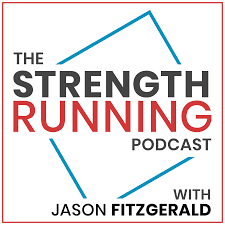
Strength Running Podcast: Are Minimalist Shoes For You?
Xero Shoes CEO Steven Sashen on the Promises of Minimalism Listen to this episode of the Strength Running Podcast and find out if Minimalist Shoes are for you. The host Jason Fitzgerald talks about the beginnings of Xero Shoes, the benefits of minimalism, how to transition, and more.Plus, find out what Jason thought of minimalist shoes...


